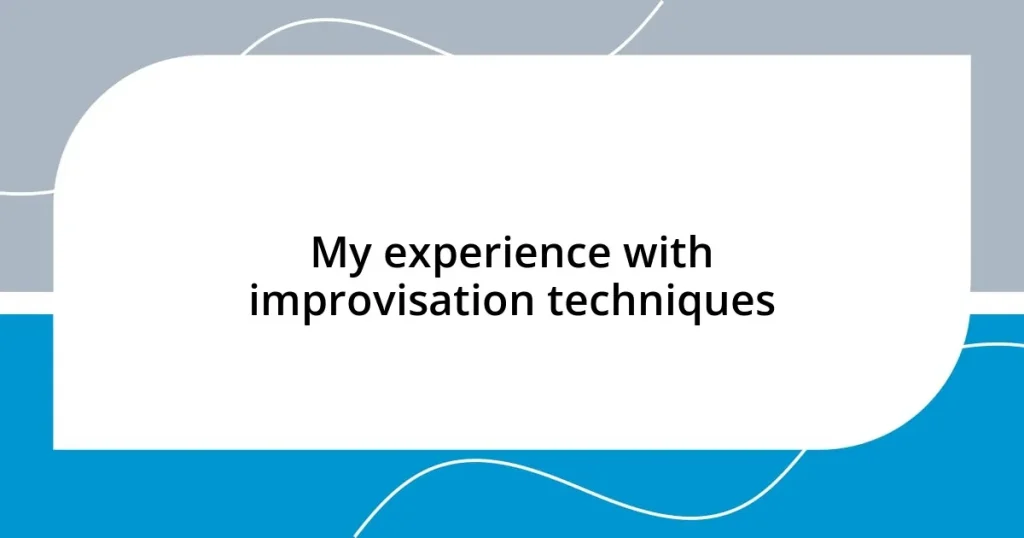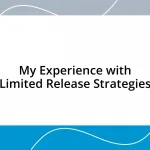Key takeaways:
- The “Yes, and…” principle enhances collaboration and creativity, both in performance and daily interactions.
- Essential skills for effective improvisation include active listening, adaptability, confidence, collaboration, and emotional awareness.
- Practical exercises like “One Word at a Time,” “Props,” and “Mirror Exercises” build foundational skills while fostering community.
- Embracing vulnerability and letting go of control are crucial for overcoming challenges in improvisation, leading to deeper connections.
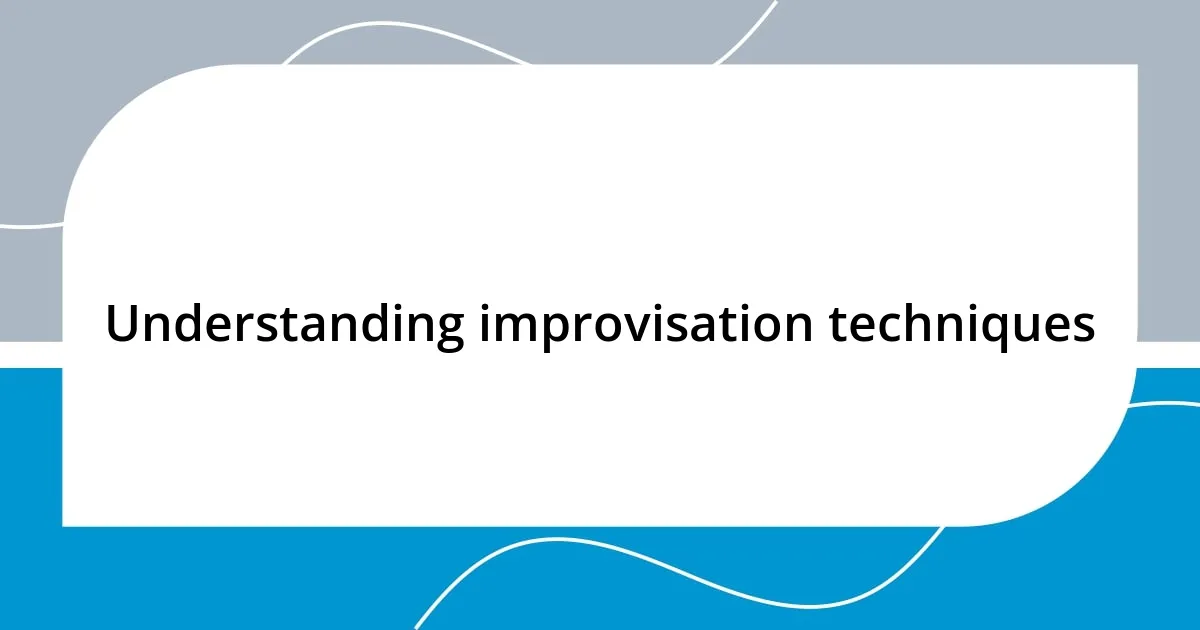
Understanding improvisation techniques
Improvisation techniques are all about spontaneity and adaptability. I remember the first time I stepped onto a stage without a script; it felt like standing on the edge of a precipice. That mix of excitement and terror is what fuels my passion for this art. It made me realize just how crucial it is to trust my instincts and be present in the moment.
One of the most valuable lessons I’ve learned in improvisation is the power of “Yes, and…” It’s a simple phrase, but it transforms interactions. Instead of shutting down ideas, it invites collaboration and creativity. I recall a session where an unexpected suggestion led us down a hilariously absurd path, and the energy in the room shifted dramatically. Have you ever experienced such a shift when you let go of control?
Practicing improvisation cultivates not just performance skills but also enhances everyday communication. I’ve found that those techniques have helped me in conversations, making them feel more organic and less scripted. When I started applying these principles to my personal life, I noticed a remarkable change in how I connected with others. The ability to respond authentically and adaptively is invaluable, and it often leads to deeper connections.
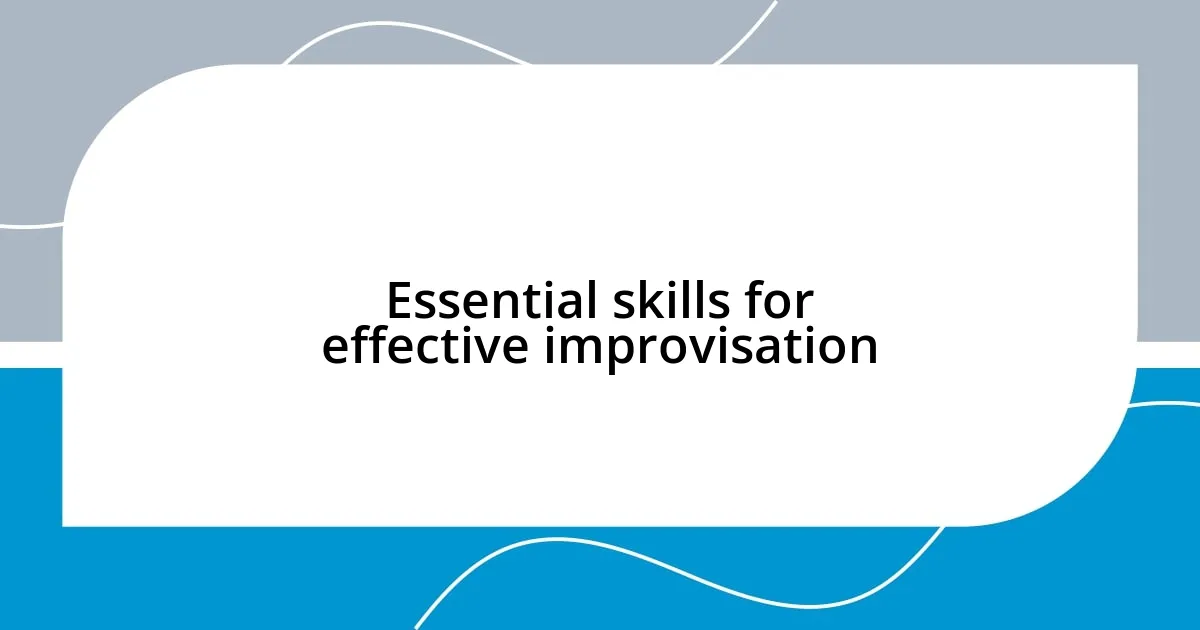
Essential skills for effective improvisation
Mastering improvisation requires honing specific skills that allow performers to navigate unexpected situations gracefully. In my experience, active listening stands out as fundamental; it’s astonishing how often we miss subtle cues when we’re busy planning our next move. I remember a rehearsal where I almost took the scene in a completely different direction, but a fleeting expression from my scene partner made me pivot. That moment taught me that being truly present not only enhances my performance but also creates a more dynamic environment for everyone involved.
Here are some essential skills that I believe every improvisor should work on:
- Active Listening: Truly hearing what others say opens up new avenues for interaction.
- Adaptability: Embracing change is vital; flexibility allows for organic growth in a scene.
- Confidence: Trusting your instincts fosters creativity and encourages bold choices.
- Collaboration: Building on each other’s ideas strengthens the narrative and promotes teamwork.
- Emotional Awareness: Tuning into your own emotions enables you to convey authenticity and connect deeply with the audience.
By focusing on these skills, I’ve noticed a marked improvement, not just on stage but also in everyday situations where trust and understanding are paramount. Each time I engage in improvisation, it feels like a celebration of spontaneity, and it reiterates the profound impact these skills can have on my interactions.
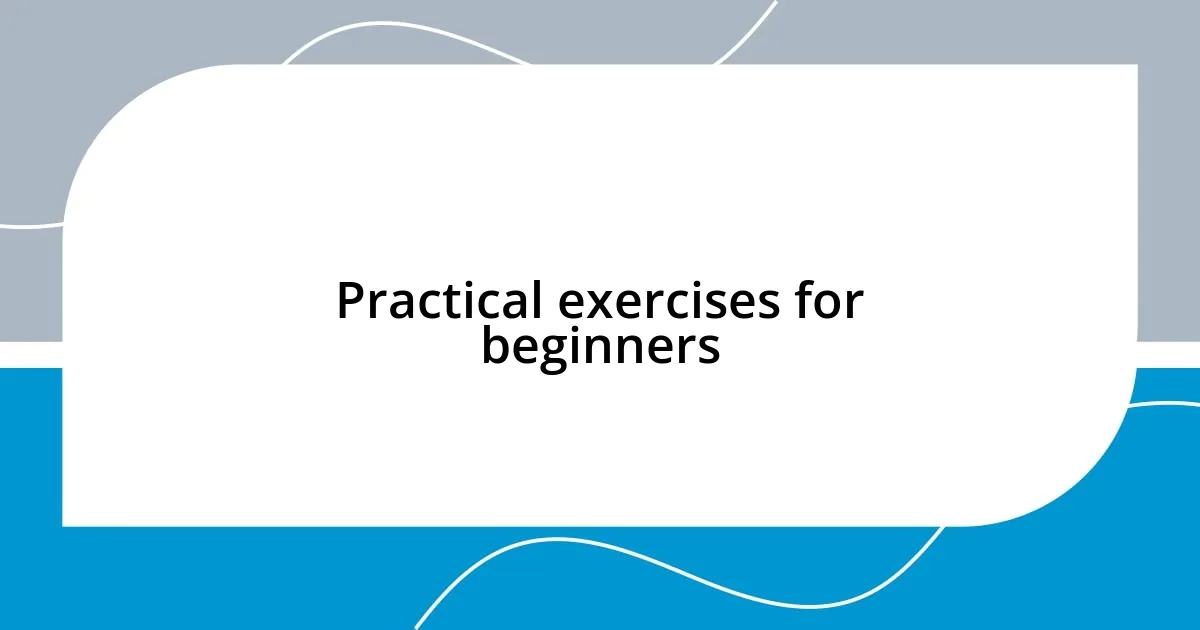
Practical exercises for beginners
Improvisation offers myriad practical exercises to help beginners find their footing. One of my favorite exercises is the “One Word at a Time” storytelling. It’s where we create a story collectively, adding one word each. The laughter and unpredictability that emerge often teach trust and collaboration. The beauty lies in seeing how a simple idea can transform into something wildly unexpected. Wouldn’t you enjoy watching a story unfold in such a dynamic way?
Another enjoyable exercise is “Props”. In this activity, each person chooses a random object and imagines its use in a different context. I remember once using a banana as a telephone during an exercise. The absurdity brought genuine joy and relaxed the group. It illustrates something profound about improvisation—there are no wrong choices. This freedom to explore is what I believe draws many to improvisation, isn’t it?
Finally, “Mirror Exercises” have been transformative for me. Paired with a partner, each person mimics the other’s movements and expressions. This practice hones observation and empathy, which are crucial in improvisation. I often find myself surprised at how connected I feel with my partner by the end of the exercise. It’s as though we’ve danced in sync, even without words. These exercises not only build foundational skills but also foster a sense of community among participants.
| Exercise | Description |
|---|---|
| One Word at a Time | A collective storytelling exercise where each participant adds one word at a time. |
| Props | Participants choose a random object and imagine its use in a different context. |
| Mirror Exercises | Partners mimic each other’s movements and expressions to build observation and empathy. |
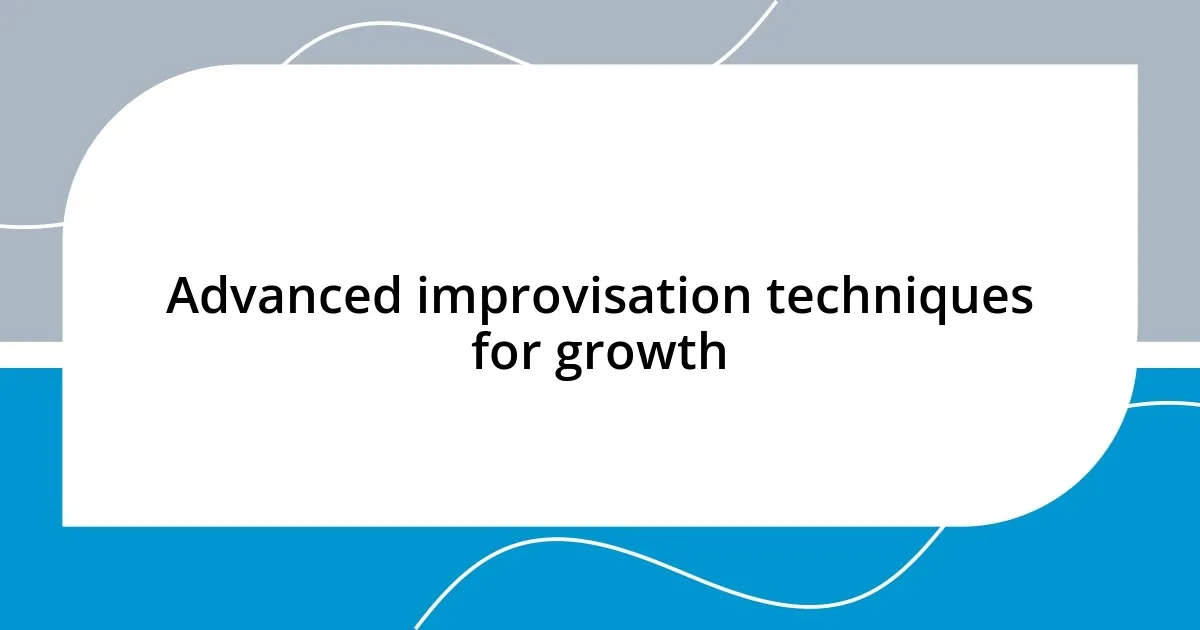
Advanced improvisation techniques for growth
One advanced technique that I’ve found immensely beneficial is the practice of “Yes, And…” in conversations. This technique encourages not only acceptance of ideas but also builds upon them. I recall a workshop where we were challenged to use this phrase exclusively for an entire scene. The energy was electric! It taught me that by saying “yes” to everything, I unlocked possibilities and depths I hadn’t considered before. Doesn’t it feel liberating to see how expansive a simple affirmation can be?
Another powerful approach is “Pattern Recognition.” This involves observing behaviors or themes that emerge during improvisation sessions. I remember a performance where I noticed a recurring gesture among my partners that, when exaggerated, turned into a hilarious motif throughout our narrative. Embracing these patterns cultivated a deeper connection within our group. Have you ever noticed how often certain themes recur in your interactions? It’s a fascinating insight that can enhance your improvisational skills by channeling those shared experiences into something uniquely vibrant.
Lastly, I advocate for integrating “Character Exploration” in advanced improv. Diving deep into various character personas is not just fun; it’s revealing. There was a time when I embodied an overly dramatic historian, and the depths I uncovered about this character brought unexpected humor and insight. I found that playing such diverse roles not only sharpened my improvisational instincts but also enriched my understanding of people around me. Isn’t it amazing how stepping into someone else’s shoes can shift your perception of reality? Embracing these techniques has made my improvisation more robust and engaging, opening doors to new dimensions of creativity.
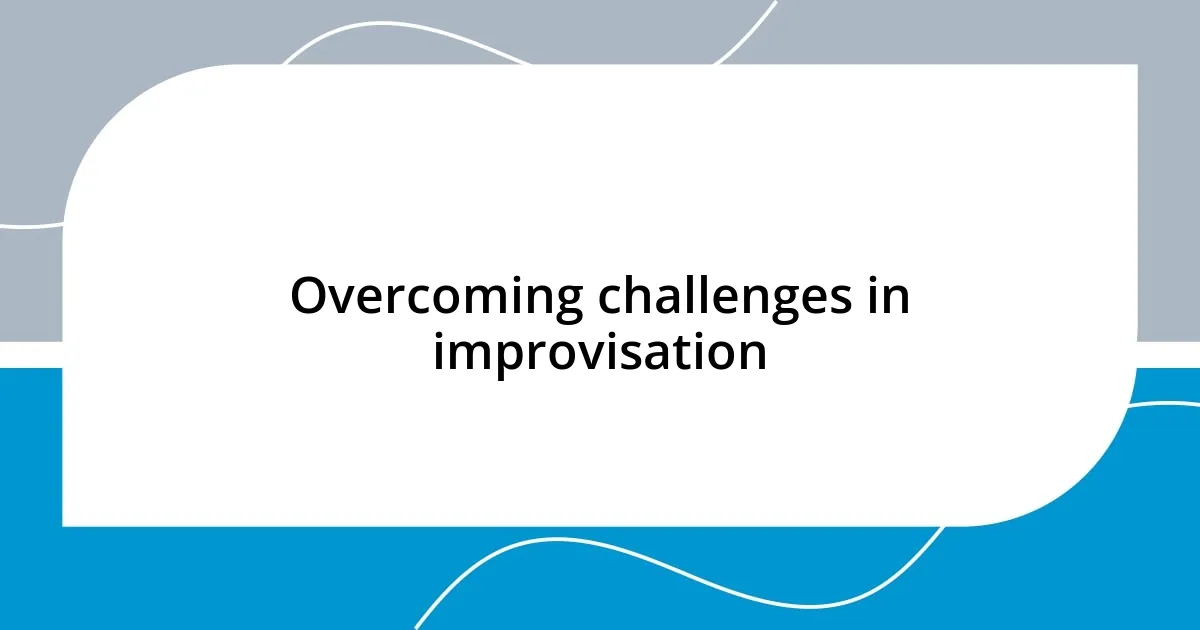
Overcoming challenges in improvisation
When it comes to overcoming challenges in improvisation, I’ve learned that embracing vulnerability is crucial. I vividly remember a moment during a performance where everything seemed to go wrong. My mind went blank, and panic set in. Instead of freezing, I decided to share that fear with the audience through humor. Their laughter turned my anxiety into a shared experience, proving that vulnerability can lead to unexpected connection.
Another challenge I often faced was the fear of judgment. Early on, I hesitated to express my ideas for fear they wouldn’t be good enough. But I discovered that everyone in the room felt similarly. Once, during a group session, we created a safe space by promising to support one another. That atmosphere of encouragement allowed us to take risks and explore outrageous ideas without holding back. Have you ever noticed how supportive environments can ignite creativity? It’s a game changer.
Lastly, I found that letting go of control is a pivotal approach in improvisation. In a memorable scene, I had a solid idea of where I wanted the story to go, but my partner’s suggestion took us in an entirely different direction. Initially, I resisted, but as I surrendered to the unfolding narrative, it became one of the most memorable scenes we created. I realized that improvisation thrives on spontaneity. How often do we miss opportunities because we cling too tightly to our plans? Embracing the unexpected can lead to the most delightful discoveries.
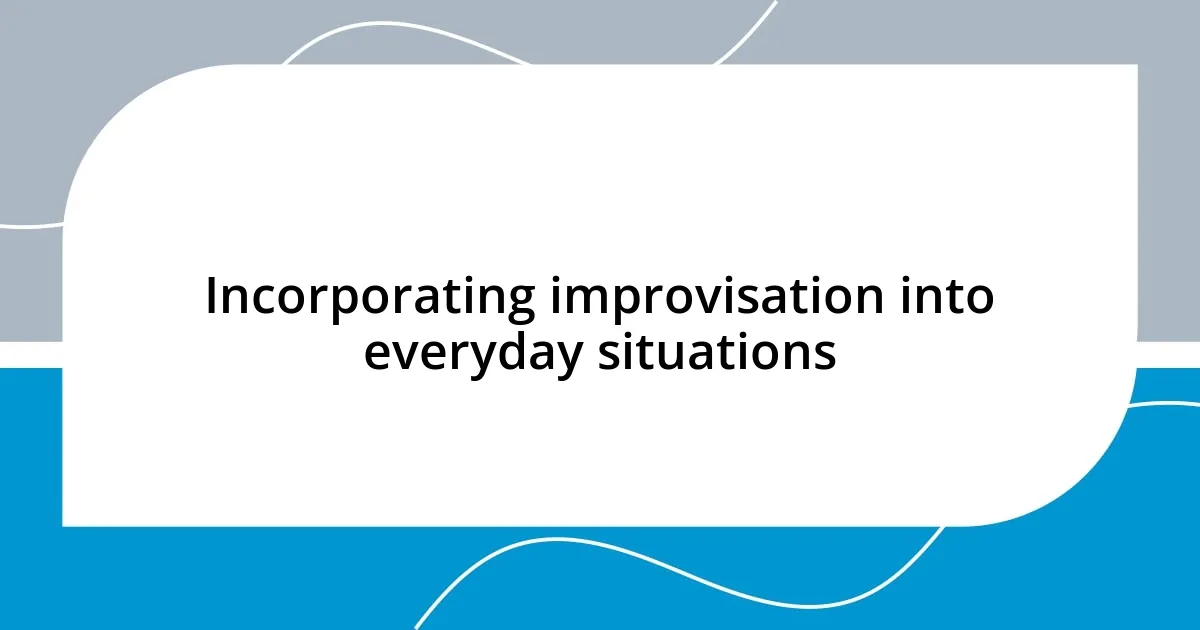
Incorporating improvisation into everyday situations
To incorporate improvisation into everyday situations, I often find joy in simply being present and responsive. I remember a day at the grocery store when the cashier made a humorous comment about the unusual items in my cart. Instead of just nodding and moving on, I leaned into it, crafting a playful exchange that turned a mundane errand into a delightful moment. Have you ever noticed how allowing spontaneity to shine through can elevate the simplest interactions?
Another way I weave improvisation into my daily life is through active listening. During a conversation with a friend who was feeling overwhelmed, I made a conscious effort to reflect back what they were saying with encouragement and humor. By embracing their emotions and responding with enthusiasm, I helped shift their perspective, creating a space for positivity. It struck me how powerful it is to nurture connections by responding genuinely—it’s a reminder that our words have the power to uplift.
I also apply improvisational techniques in family dynamics, especially during our dinner discussions. When our kids throw out wild ideas or unexpected questions, I get excited rather than skeptical. I embrace their creativity, often riffing off their suggestions and expanding the conversation into playful territory. Isn’t it fascinating how these moments of shared imagination not only spark joy but also strengthen our family bonds? Incorporating improvisation into everyday situations enriches those experiences and fosters deeper connections.











